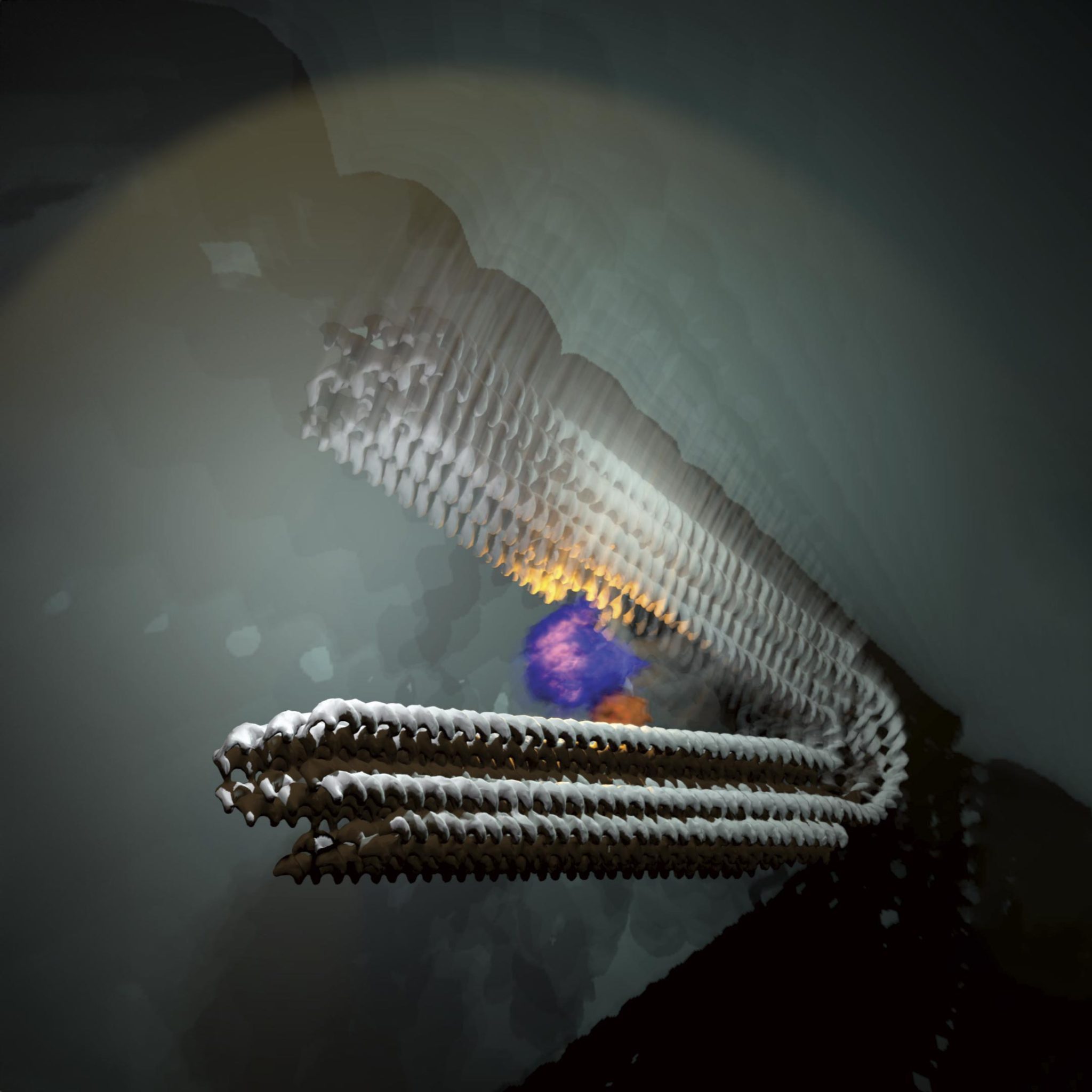

| Date | 27th, Oct 2023 |
|---|

The novel type of nanomotor with an RNA polymerase, which pulls the two “handles” together and then releases them again. This generates a pulsing movement. Credit: Mathias Centola/University of Bonn
This machine developed at the University of Bonn measures just one ten-thousandth of a millimeter.
An international team of scientists headed by the University of Bonn has developed a novel type of nanomotor. It is driven by a clever mechanism and can perform pulsing movements. The researchers are now planning to fit it with a coupling and install it as a drive in complex machines. Their findings have now appeared in the journal Nature Nanotechnology.
This novel type of motor is similar to a hand grip trainer that strengthens your grip when used regularly. However, the motor is around one million times smaller. Two handles are connected by a spring in a V-shaped structure.
In a hand grip trainer, you squeeze the handles together against the resistance of the spring. Once you release your grip, the spring pushes the handles back to their original position. “Our motor uses a very similar principle,” explains Prof. Dr. Michael Famulok from the Life and Medical Sciences (LIMES) Institute at the University of Bonn. “But the handles are not pressed together but rather pulled together.”
For this purpose, the researchers have repurposed a mechanism without which there would be no plants or animals. Every cell is equipped with a sort of library. It contains the blueprints for all types of proteins that the cell needs to perform its function. If the cell wants to produce a certain type of protein, it orders a copy of the respective blueprint. This transcript is produced by RNA polymerases.
